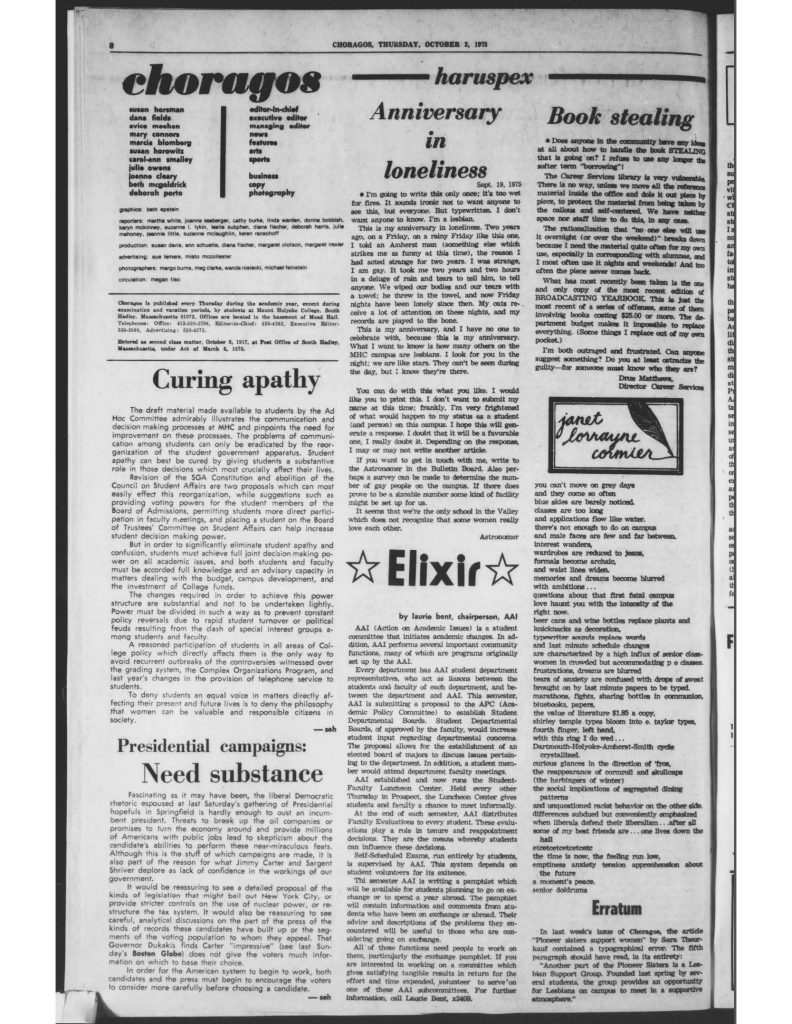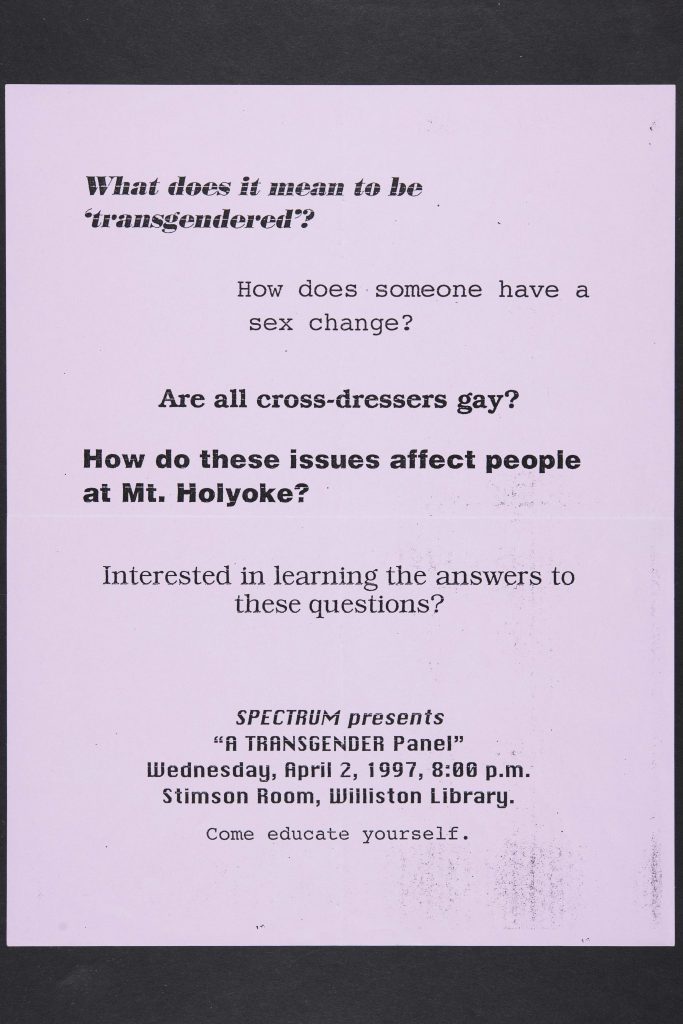In October of 1975, an unnamed student who went by the pseudonym “the Astronomer” published a letter in the Mount Holyoke student newspaper Choragos declaring her “anniversary of loneliness”. Although the Astronomer was far from the first lesbian on campus, with no out lesbians and no support groups, she felt isolated. Soon after her letter’s publication, lesbian students began gathering in support of one another every Friday night in the Eliot House. What blossomed out of the anonymous article declaring loneliness was support, camaraderie, and the beginnings of the battles against homophobia.
LGBTQ activism at Mount Holyoke College as we know it existed in two ways. The first was in support groups. The second was to rally and protest against homophobia that lesbian and bisexual students faced. Without the networks of support groups and the community developing on campus, these fights never could have been as successful as they were.
*A note on language & inclusion: the LGBTQ community is a community with rapidly evolving identities and politics. This exhibit includes language used by people at the time for clarity and out of respect for their chosen identities and histories. In referring to modern day movements, this exhibit will use the term LGBTQ community.

After support groups became more public, the number of homophobic attacks increased. The backlash against the growing visibility of the Lesbian Bisexual Alliance included many methods such as tearing down Lesbian Bisexual Alliance flyers or organizing heterosexual rallies. The Lesbian Alliance fought against these homophobic attacks with meetings, protests, and publishing their own opinion articles in the newspaper.
The above flyer represents the first recorded event regarding transgender awareness at Mount Holyoke College. Although this event was a panel of transgender people unaffiliated with the College, the event began to shed light on discussions of transgender issues that were beginning to happen on campus.
The archives has a video recording of a Mount Holyoke News clip in which students from multiple lesbian and bisexual organizations asked for a cultural house. After their requests were denied multiple times over several years, students protested. The students’ protest began in the wake of President Creighton’s Plan for 2003, which, among other things, stated that there were no plans for additional cultural houses.
On the first day of the protest, students listed 11 demands, only several of which were met. One of the unmet demands were the creation of cultural houses, so students took to the streets, or rather, the lawn of President Creighton’s house and the gates in front of Mary Lyon Hall. After several days of protests, students felt that their voices were still unheard, and they decided to occupy Mary Lyon Hall. Although President Creighton announced that she would suspend any and all students involved in the building takeover, she later revoked her statement. In response to the takeover, the students were granted an LGBTQ house, built in 1999, and other cultural centers. This house is called the Marks House, dedicated to Jeannette Marks, President Mary Woolley’s longtime partner and a professor of English Literature at Mount Holyoke.
This portion of the exhibition was curated by Chloe Jensen, 2020.

